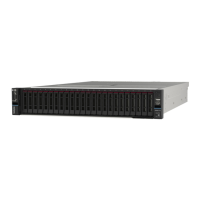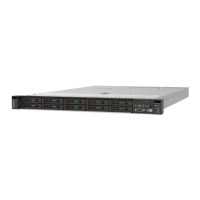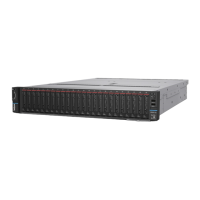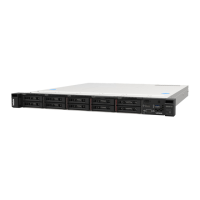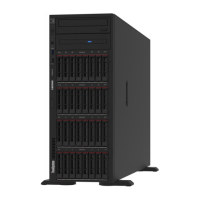• Each adapter.
• Hard disk drives.
• Memory modules until you reach the minimal configuration for debugging that is supported for the
server.
To determine the minimal configuration for your server, see “Minimal configuration for debugging” in
“Technical specifications” on page 3.
4. Power on the server.
If the problem is solved when you remove an adapter from the server, but the problem recurs when you
install the same adapter again, suspect the adapter. If the problem recurs when you replace the adapter with
a different one, try a different PCIe slot.
If the problem appears to be a networking problem and the server passes all system tests, suspect a network
cabling problem that is external to the server.
Resolving suspected power problems
Power problems can be difficult to solve. For example, a short circuit can exist anywhere on any of the power
distribution buses. Usually, a short circuit will cause the power subsystem to shut down because of an
overcurrent condition.
Complete the following steps to diagnose and resolve a suspected power problem.
Step 1. Check the event log and resolve any errors related to the power.
Note: Start with the event log of the application that is managing the server. For more information
about event logs, see
“Event logs” on page 475.
Step 2. Check for short circuits, for example, if a loose screw is causing a short circuit on a circuit board.
Step 3. Remove the adapters and disconnect the cables and power cords to all internal and external
devices until the server is at the minimal configuration for debugging that is required for the server
to start. To determine the minimal configuration for your server, see “Minimal configuration for
debugging” in
“Technical specifications” on page 3.
Step 4. Reconnect all AC power cords and turn on the server. If the server starts successfully, reseat the
adapters and devices one at a time until the problem is isolated.
If the server does not start from the minimal configuration, replace the components in the minimal
configuration one at a time until the problem is isolated.
Resolving suspected Ethernet controller problems
The method that you use to test the Ethernet controller depends on which operating system you are using.
See the operating-system documentation for information about Ethernet controllers, and see the Ethernet
controller device-driver README file.
Complete the following steps to attempt to resolve suspected problems with the Ethernet controller.
Step 1. Make sure that the correct device drivers are installed and that they are at the latest level.
Step 2. Make sure that the Ethernet cable is installed correctly.
• The cable must be securely attached at all connections. If the cable is attached but the problem
remains, try a different cable.
• Make sure that the cable used is supported by the adapter. For more information about the
supported adapters, cables, and transceivers of the specific servers, go to
https://
serverproven.lenovo.com/thinksystem/index
.
Chapter 8. Problem determination 497

